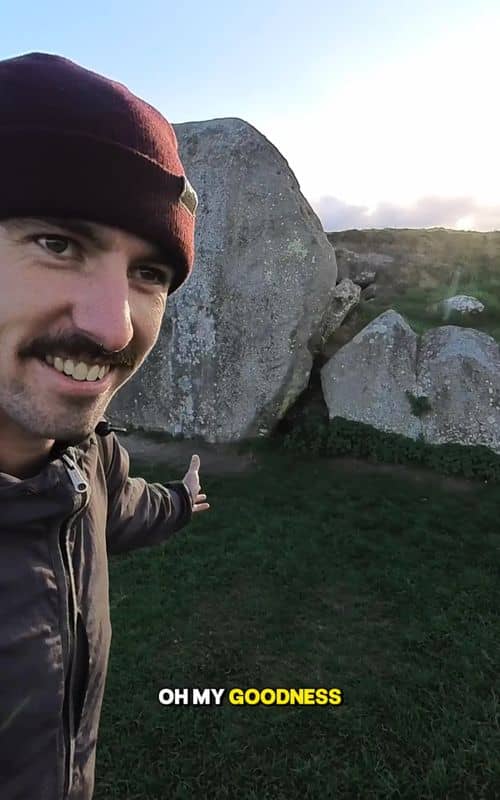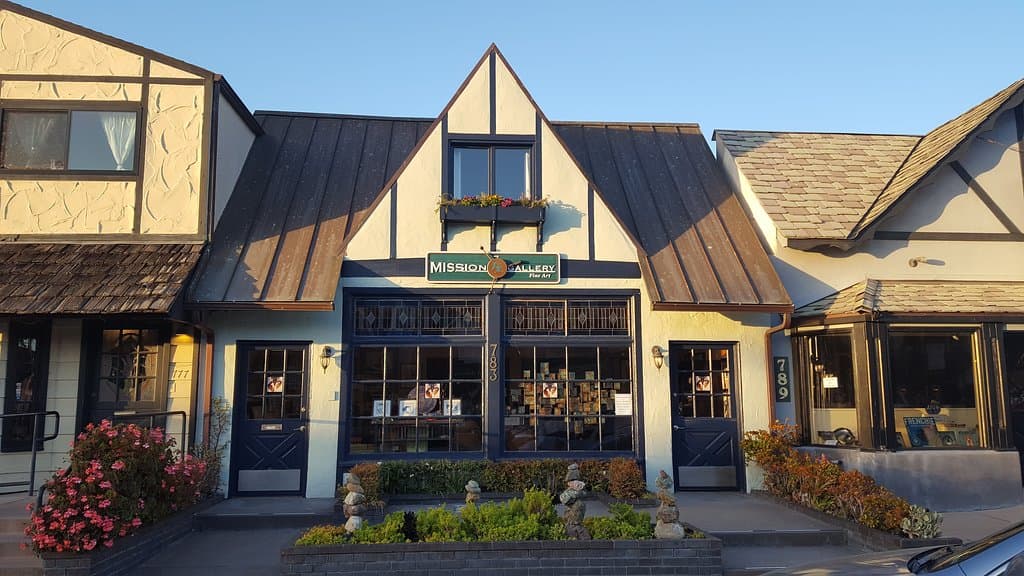Parc le Breos Burial Chamber
Explore a 6,000-year-old Neolithic burial chamber in a serene Welsh valley, a window into ancient rituals and lives.
Highlights
Must-see attractions

Social
From TikTok & Reddit
Best Time
Best light for exploration
Parc le Breos Burial Chamber
Best Time
Best light for exploration
Highlights
Must-see attractions
Explore a 6,000-year-old Neolithic burial chamber in a serene Welsh valley, a window into ancient rituals and lives.
"A fascinating glimpse into prehistoric Wales, with an atmospheric setting and significant archaeological finds."
🚶♀️ Easy Walking Paths
The walk to the chamber is mostly flat and on gravel, making it accessible for most visitors. :athletic_shoe:
🌿 Wild Garlic Spot
Look for wild garlic in the woods nearby, especially along paths leading towards Three Cliffs Bay. :herb:
Highlights
Discover the most iconic attractions and experiences
Neolithic Burial Chamber
Parc le Breos Cwm
Explore a well-preserved Cotswold-Severn type tomb, a window into 6,000-year-old rituals and lives.
Atmospheric Valley Setting
Parc le Breos Cwm
Experience the evocative atmosphere of this dry valley, once a deer park and a place of ancient significance.
Archaeological Significance
The Chamber
Discover the findings from excavations, including remains of over 40 individuals and ancient animal bones.
Plans like a pro.
Thinks like you
Planning Your Visit
Timing Your Visit
Respecting the Site
Best Times
Insider Tips
from TikTok, Instagram & Reddit
🚶♀️ Easy Walking Paths
The walk to the chamber is mostly flat and on gravel, making it accessible for most visitors. :athletic_shoe:
🌿 Wild Garlic Spot
Look for wild garlic in the woods nearby, especially along paths leading towards Three Cliffs Bay. :herb:
📜 Informative Boards
Information boards at the site provide fascinating details about its history and excavations. :memo:
📸 Capture the Atmosphere
The ancient stones and surrounding landscape offer a unique, atmospheric backdrop for photos. :camerawithflash:
Tips
from all over the internet
🚶♀️ Easy Walking Paths
The walk to the chamber is mostly flat and on gravel, making it accessible for most visitors. :athletic_shoe:
🌿 Wild Garlic Spot
Look for wild garlic in the woods nearby, especially along paths leading towards Three Cliffs Bay. :herb:
📜 Informative Boards
Information boards at the site provide fascinating details about its history and excavations. :memo:
📸 Capture the Atmosphere
The ancient stones and surrounding landscape offer a unique, atmospheric backdrop for photos. :camerawithflash:
What Travellers Say
Reviews Summary
Visitors find Parc le Breos Burial Chamber to be a fascinating and atmospheric Neolithic site, offering a glimpse into ancient history. The well-preserved chamber and the tranquil valley setting are frequently praised. Some note the lack of extensive facilities, but the historical significance and ease of access are major draws.
"The transepted long cairn of Parc le Breos Cwm, taking its name from the great medieval deer-park in which it now lies (300001), is located at the bottom of a narrow dry valley at an altitude of about 15m above OD.
Presenting most of the classic features of the Cotswold-Severn group, the tomb comprises a wedge-shaped cairn aligned N-S and measuring about 22m long and 13m wide on the S (6m on the N), with a burial chamber accessed through an opening in a bell-shaped forecourt neatly revetted with local stone on the S. Much of the cairn has been removed, and the chamber is fully exposed. It is built of upright limestone slabs with fine dry walling filling irregular spaces between them. The rectangular layout comprises a gallery about 6m long and 1m wide leading directly from the forecourt, and two pairs of transeptal chambers averaging 1.6m long (E-W) by 1.0m internally. The gallery uprights are up to 1.5m high, those of the chambers generally less than 1m. No capstones have been recorded.
Excavated in the early 1960s, samples have recently been subjected to radiocarbon dating in the most complete dating programme undertaken for any chambered tomb in Wales. The tomb was in use for as long as 800 years, from 3800 BC, or for as little as 300 years. Human remains recovered from the chamber represent an estimated minimum of 40 individuals. Some skeletal remains showed evidence for scavenging by carnivores. Bodies may have lain exposed for various periods of time and were deposited as defleshed parcels of bone, not bulky bodies. A passageway deposit showed no such damage and was therefore placed in the tomb as a fleshed corpse.
Animal bones were also recovered and included 8 dogs, a cat, a red deer, pig, sheep, and cattle. There are insufficient data to show how they got there, but one deer bone was dated to 800 - 200 BC; therefore, some bones entered the tomb long after it was abandoned. Other bones gave dates of 6640-6410 BC and 11050-10200 BC, the latter from the end of the Ice Age. It has been speculated that these bones came from Cat Hole Cave, which overlooks the site. Corpses may have been placed there until defleshed and other bones unwittingly gathered up with human remains, or perhaps incorporated later in activities at the tomb.
Proceedings of the Prehistoric Society 64 (1998), pp.139-182"
Jon Beard
"Nice flat walk. Can go slightly off the beaten path to check out the cave but otherwise all flat and gravel."
Nolan David
"Park Wood Long Cairn, Wales
(From the information boards)
Used between 3000 and 1900 BC for the ceremonial burial of the dead
Archaeologists have discovered the remains of up to 40 men, women and children in this cairn.
Religious ceremonies were conducted in the courtyard involving the burial of cremated bone, pottery, burnt flint, including a large leaf-shaped arrowhead, and pieces of rock quartz that may have come from nearby.
Other remains were cremated. Several bodies were buried in the passageway many hundreds of years after the last bones were put in the side chambers. Bones of pig, sheep/goat, cattle, deer, dog, cat and fox were also found during excavations in 1869 and 1960."
Zobo 75
What People Like
What People Dislike
Frequently Asked Questions
🚇 🗺️ Getting There
Parc le Breos Burial Chamber is located in Parc le Breos Cwm, near Swansea, Wales. Access is typically via car, with parking available nearby. The site is situated in a valley, and the walk from parking to the chamber is generally flat and easy.
Yes, there is parking available near the burial chamber. The walk from the parking area to the site is described as a nice flat walk on gravel.
Information on direct public transport routes is limited. It's advisable to check local bus services in the Swansea area and be prepared for a potential walk from the nearest stop.
The approach is generally straightforward, with the site located at the bottom of a narrow dry valley. The path is described as flat and gravelled.
While the site has historical significance, amenities like toilets and extensive visitor facilities might be limited. It's recommended to check recent visitor feedback or plan accordingly.
🎫 🎫 Tickets & Entry
Parc le Breos Burial Chamber is generally accessible without an entrance fee, as it's an ancient monument. However, it's always a good idea to confirm current access policies before your visit.
As an open-air ancient monument, Parc le Breos Burial Chamber is typically accessible during daylight hours. There are no set opening or closing times.
No, there is typically no admission fee to visit Parc le Breos Burial Chamber, as it is an ancient monument managed for public access.
You can visit Parc le Breos Burial Chamber during daylight hours. It's an outdoor site, so access is generally unrestricted during the day.
Visitors are asked to treat the site with respect. Avoid climbing on the stones or disturbing the ancient remains. Stick to paths where available.
🎫 🧭 Onsite Experience
It's a transepted long cairn, a classic example of the Cotswold-Severn group of Neolithic tombs. It features a wedge-shaped cairn and a burial chamber accessed from a forecourt. Excavations revealed remains of at least 40 individuals.
You can explore the exposed burial chamber, which consists of a gallery and transeptal chambers. Information boards detail the archaeological findings, including human and animal remains.
Yes, children can visit. The flat, gravel path makes it accessible, and the historical aspect can be educational. Adult supervision is recommended.
A visit typically takes about 30-60 minutes, depending on your interest in exploring the site and reading the information boards.
The walk to the chamber is described as a nice flat walk on gravel. The surrounding valley offers a pleasant natural environment.
📸 📸 Photography
The atmospheric ancient stones, the chamber's interior, and the surrounding valley landscape offer great photographic potential. Capture the sense of history and the natural beauty.
Yes, photography is generally allowed for personal use. Be mindful of other visitors and avoid using flash inside the chamber if it could disturb the environment.
Daylight hours are essential. Early morning or late afternoon light can create dramatic shadows and enhance the atmospheric feel of the ancient site.
Experiment with wide shots of the chamber within its valley setting, and close-ups of the stonework to highlight its ancient construction.
Drone usage regulations can vary. It's advisable to check with local authorities or the site management regarding any restrictions on drone photography before flying.
For Different Travelers
Tailored advice for your travel style
👨👩👧 Families with Kids
Consider turning the visit into a mini-adventure by looking for wild garlic in the nearby woods, as suggested by locals. While there aren't specific play areas, the natural environment provides space for children to explore safely under supervision. Remember to emphasize respect for the ancient site and its significance.
🚶♀️ Nature Enthusiasts & Hikers
Combine your visit with a hike through the surrounding woodlands, known for their abundant wild garlic during the spring season. The area is also a gateway to other stunning Gower Peninsula landscapes, including the famous Three Cliffs Bay, allowing for extended exploration and photography opportunities.
Deep Dives
In-depth insights and expert knowledge
The Neolithic History of Parc le Breos
The chamber itself is a testament to Neolithic engineering, featuring a wedge-shaped cairn and a well-defined burial chamber accessed through a forecourt. The construction utilizes upright limestone slabs with dry stone walling to fill gaps. Archaeologists have also found pottery shards and animal bones, hinting at the rituals and daily life associated with the tomb's use. Some of these animal bones, like deer, date much later, suggesting continued activity or secondary deposition in the area.
The radiocarbon dating of samples from Parc le Breos has provided crucial insights into its timeline and usage. The discovery of defleshed bone parcels and intact corpses suggests varied practices in how bodies were deposited. The presence of Ice Age animal bones, possibly from nearby Cat Hole Cave, adds another layer of complexity to the site's long history, indicating that the valley has been significant for millennia.
Exploring the Surrounding Landscape
Visitors can enjoy a pleasant walk through the valley. The path leading to the chamber is described as flat and gravelled, making it accessible for most. The surrounding woodlands are noted for their abundance of wild garlic, particularly along paths that lead towards the popular Three Cliffs Bay. This offers an opportunity to combine a historical visit with a nature walk.
While the burial chamber is the primary focus, the broader landscape offers opportunities for exploration. The proximity to areas like Three Cliffs Bay means that a visit to Parc le Breos can be part of a larger itinerary exploring the Gower Peninsula's natural beauty and historical sites.


Social
from TikTok, Instagram & Reddit